Old Car Character + Kingswood Engine Swap + Chrysler Centura - Morley 394



|
Morley revels in the charm of period imperfection, kicks a few options around for Guido's Kingswood donk swap and muses on the unfulfilled potential of Chrysler's Centura
Write to Morley c/o uniquecars@primecreative.com.au
or Unique Cars magazine, 379 Docklands Drive, Docklands, Victoria 3008
MORLEY'S SOAPBOX
CHARACTER DEVELOPMENT
It’s been wet in Melbourne recently. As in, real wet; for more than a month. Which means I haven’t been out exercising the fleet like I normally do. It’s not that I have some pathological fear of driving my special cars in the wet (no trailer queens at the Melbourne Bloke Centre, let me assure you) but I see no real point in going for a joy-ride if I’m not heading anywhere specific and all I’m doing is getting the cars filthy and going slow round corners.
Anyway, when the weather finally broke the other day, I took the opportunity to take a couple of cars for a gallop. Now, my other job in this world is to test new cars for a variety of magazines and newspapers, and I have to say that both my old cars soon revealed flaws that would absolutely sink a brand-new car in any road test I was conducting.
The Ford one, for instance, has a terrible vibration somewhere around the firewall (probably something to do with the tremors caused by the ridiculous camshaft in it) it has a ride harsh enough to make
you get out and check that there’s actually suspension fitted at all, and the headlights are dimmer than the boss’ son. The Holden one, meanwhile, has abysmal interior build quality and plastics, haphazard switchgear and more driveline shunt than a railway goods yard.
But you know what? While those flaws would condemn that brand-newie I was talking about, they don’t really matter in the context of a car where a successful journey is one where it returns home under its own steam. We forgive our elderly cars many sins, and appreciate them for the breath of fresh air they provide in a world that is increasingly digital at the expense of the analogue.
I guess it’s kind of like people really: Who cares if Grandma can never remember where she puts her car keys? As one road user to another, that’s probably for the best, if you know what I mean. And so what if Grandad loses a bit of pressure every now and then? Gives you the chance to blame the dog and have a chuckle, right?
And right there, you have the crux of why we can put up with old cars that dribble on the driveway and make loud exploding noises from time to time: It’s because they make us smile. And in a world where people smugglers prey on the desperate, politicians are greedy and corrupt and the TV networks think locking a dozen brain-deads in a house and filming them passes for entertainment, then a grin and a giggle is impossible to put a price on.
HERE'S MY TIP

Blue note
Most of us like to keep our classic interiors looking as original as possible, and if you’re intent on not having wires, adapters and dongles hanging around, it’s well worth getting your original stereo system retrofitted with a Bluetooth module. Go to a reputable source and it should run you about $300, but it’ll help you stay legal and look sharp.
LETTERS

Guido's dilemma
I won’t tell you what to do as it’s your car, Guido, but I’m happy to say what I’d do if it was my car. I’d hunt down one of the fuel-injected Holden five-litre motors as run in Series 1 VT Commodores etc. It should bolt straight in and not be too powerful to outshine the rest of the car. If it was treated gently you might even get away with the Trimatic (perhaps reconditioned) but a brake update wouldn’t hurt. The best bit is there would be no need to put bowtie badges on the car. I’m surprised the 253 isn’t doing the business – maybe it just needs a reco too?
Pete Minahan
I like the way you’re thinking Pete. Those injected five-litre Holden V8s are one of my all-time faves. In fact, I reckon for a street motor in a car that isn’t too heavy, I’d take an Iron Lion over the Chevy LS1 any day. And I reckon Guido’s HZ Kingy fits both those bills; it’s definitely a street-driven car and even though it was considered a big, heavy car in its day, it’d give several hundred kilos away to a modern VF Commodore V8.
However, I reckon I’d be upgrading the brakes and looking seriously at a better gearbox. But here’s the thing; those five-litre Holden motors weren’t just used in the VT Series 1, they were fitted to every V8 Commodore from the VN onwards (I know, ‘cos there’s a VN SS in residence at the Melbourne Bloke Centre). And instead of the old Turbo 350 slushbox, they had either a T5 (or, later, Getrag) five-speed manual or the THM700 four-speed auto. And the even better news is that wrecking yards are full of VN/VP/VR/VS/VT Commodores that have either been shunted up the jacksie or parked on their roofs by P-Platers.
So now imagine Guido’s HZ with an Iron Lion backed up by a four-speed auto. Tasty, no? Heck, I’ve even seen Kingswoods of Guido’s car’s era with the 3.8-litre Commodore V6 on board. Or what about the supercharged version of that same V6? The possibilities are endless. But there’s a catch. Of course, there is. There always is. Depending on what State you live in, there are a few engineering hoops to jump through when putting a late-model engine in an early-model car. Not only would the brakes have to be upgraded, but in most (if not all) States you’d also need to meet the emissions standards of the donor engine, not the car it’s now living in. And that can mean being tested by an engineer, a sniffer test and a thousand little add-ons from a charcoal canister to even having the vapour-proof filler cap and the filler neck that will only accept a ULP nozzle at the servo. It’ a bit of a minefield. Not saying it can’t be done, but it won’t be cheap and it won’t be as simple as you might have imagined.
So the other way to go is to keep it real and stick with carburetted V8. My choice would be a 308 with the later, VN-style heads and a decent vacuum-secondary carby and have the block redrilled to accept the THM700 four-speed auto. The improved gearing will give the old girl an extra kick in the bum and the overdrive top gear should also improve economy on the highway.
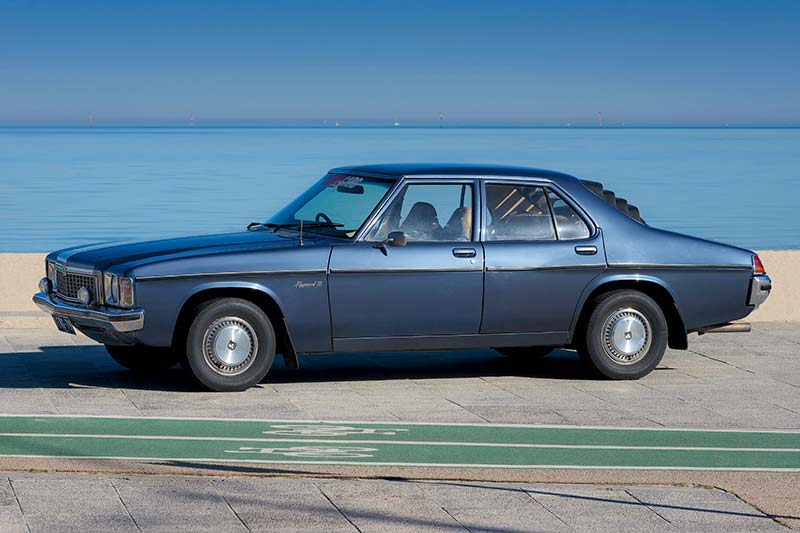
And again
Ah, the old Kingswood; yes…
You could put a 308 with the Turbo 350 and a Salisbury diff with a 2.78 or 3.08:1 ratio. And some good brakes; drums work well you know. There are still parts around yet for the HQ to HX Holdens, so keeping a HZ running shouldn’t be impossible. So definitely keep the Kingy going!
But keep it simple (a Holley carb, maybe); that 70s feel won’t be lost that way. I am an old spanner pusher and wore a few Holdens out over the years. Which is probably why I enjoy this magazine.
Joe Grimlinger,
Narrogin, WA
Yeah, I’m inclined to agree Joe. By keeping it simple and maintaining the Kingswood with bits and pieces that were around in the day, you retain the original feel and vibe of the car. Which, I suspect, is an important part of why Guido still owns the thing in the first place. I’m all for resto-rods (where you keep the old body and modernise everything else) but you need to upgrade everything that affects how the car drives. And that runs from the driveline, to the brakes, to the steering and how it goes around corners. You can’t just tackle one area, either, because you’ve got to match the bits and pieces so they work in harmony and the car feels like a resolved machine. In fact, you’d probably be disappointed with the end result if you ended up with a car with 2016 straight-line speed and 1970s cornering and braking. Balance, Grasshopper. Balance.

Two Centuras worth
If I may continue the story of the Chrysler Centura; not only was the 245/four-speed a rocket, John Ellis, Chrysler’s man in charge of the racing program, never intended the Charger E55 to be built as a race car as some would have you believe. The development of the Hemi motor with the Webers in Italy, the local content rules and the retooling to fit the four-speed 340 combo in the Charger meant NO Charger V8 race-cars.
Once the E49 mechanicals were developed, Ellis was going to shift these proven race components into the lighter (1150kg) and slipperier Centura. The firewall was to be moved back (a la Torana) to improve balance and handling. Think about a Centura with SL/R Torana-type wheel-arch flares with 225kW and a four-speed down Con-Rod Straight.
Forget all your Phase 4 reveals, your Force 7 what-might-have-beens, your Torana V8 unleadeds and your Charger V8 Special: This Webered Centura would have been the car to beat them all. And this car should have come out in 1971-72. Think about it: EH-sized, torquey six-cylinder motor, McPherson strut front end, rack-and-pinion steering. Kind of sounds like the first Commodore to me. Only eight years earlier.
To see your recent issue on the "five Chryslers you should buy now" include two CKD Yank Tanks and no Centura…what a joke. It’s time to give this car respect as an Aussie original.
Ray Campbell,
Putty, NSW
Your point is a hard one to argue with, Ray. I agree that a Centura with the equivalent of the E49 engine and gearbox from the Charger would have been a potential Bathurst winner. Not only that, But I reckon it would have been a magnificent road car into the bargain. Imagine it with a variation on the Hemi six-pack decals and stripe down each side. Maybe an offset bonnet scoop, some paint black-outs, bumpers in body-colour and a set of deep-dish peanut mags. Oh, and don’t forget the side-exit exhaust system. Anybody got a computer program to conjure that up? Make mine hemi Orange.
Of course, the pantheon of great Aussie performance cars has a basement full of coulda-beens. The supercar scare of 1971 killed things like the Phase 4 Falcon dead and both Holden and Chrysler stopped to have a big rethink about where they were going and whether or not they’d like to ever score a government supply contract again. And let’s not forget also, that the homologation rules for Bathurst changed at the same time, effectively meaning that the manufacturers no longer had to race exactly what they sold. Of course, that meant that the Bathurst-spec road cars we loved and admired were instantly watered down and magically turned the GT-HO Phase 3, the Torana XU1 and the Charger E49 into instant classics.
But, like I said, I agree that a Bathurst-spec Centura would have been a hell of a thing. And had it happened, you can bet your bottom dollar the Centura would not be experiencing the obscurity it now does. In fact, at the most recent Shannons auction in Melbourne, I saw a neat, original 215-powered Centura change hands for just $4000. An LX Torana in the same sort of nick would have brought thousands more
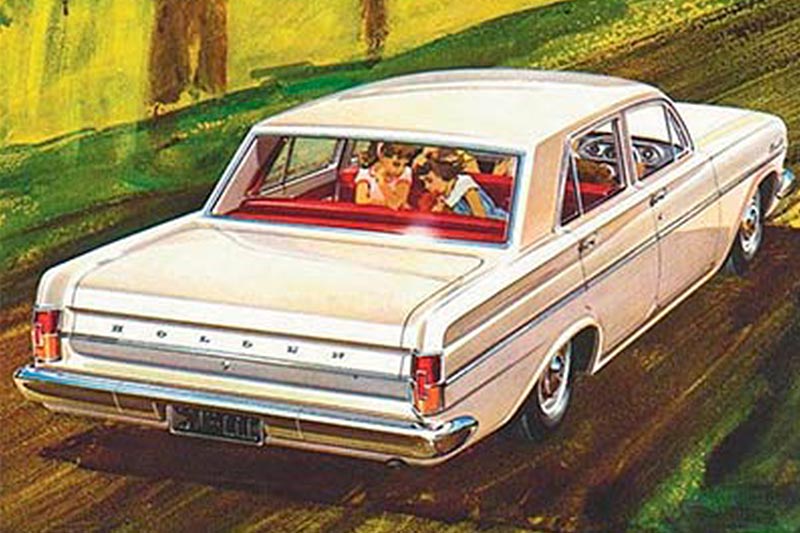
More EH assistance
I have been reading with interest the letters in Morley’s Workshop as to whether EH Holdens had power-steering. Around 1973 to ’75 I was into my second or third year of my mechanic’s apprenticeship and rebuilding my EH Premier. I had a phone call from a mate telling me of an EH Premier belonging to his mate having been written off and was I interested in buying any parts. And, my mate said, it also had power-steering. I went and had a look and sure enough it had the power-steering. I think one of the hoses had ruptured as there was oil all over the engine bay.
It was as Alan and Cheryl Poole described in their letter (issue 391); exposed rams and hoses just hanging there. I didn’t buy it as I couldn’t afford it at the time. I’ve had six EHs since, but wish I had that particular car now.
John Callahan.
Hmm. I wonder, John, what an EH with factory-fitted power-steering would be worth compared with an otherwise identical car without that option? Maybe not that much. Then again…
I guess you buy any EH Holden these days on overall condition rather than what options it had when new. I mean, I’d take a clean, rust-free Special over a rotted Premier any day. Still the comparison between a non-assisted apple and a power-assisted apple would be interesting. Anybody out there done the sums on this?
Actually, who knows, maybe an EH without power-hook would be a nicer car to drive. Yes, it’d be heavier to park and such, but knowing what I know about early power-steering systems in Aussie cars, an assisted EH could well be a bit of a boat to steer. I reckon there are other options that people paid extra money for back in the day that actually strip value from the same car as a collectible a few decades on. Those half-metal-half-vinyl roofs, for instance. You know, the ones that clad the rear section of the roof in vinyl so it looked like the car had a receding hairline. The worst ones continued the vinyl down the C-pillar and along under the side windows in a thin strip of stylistic misjudgement. Okay, they make an era-correct statement, but I can never help but feel that statement is along the line of ‘Hi, I’m a fashion victim’.
And what about aftermarket accessories. Sure a set of era-correct Tasman mag wheels can be cool, but if I ever get my hands around the throat of the bozo who cut the aftermarket sunroof into my Escort RS2000, I’m gonna make sure he never gets to do it again. And, yes, I’ll bet money it was a he.
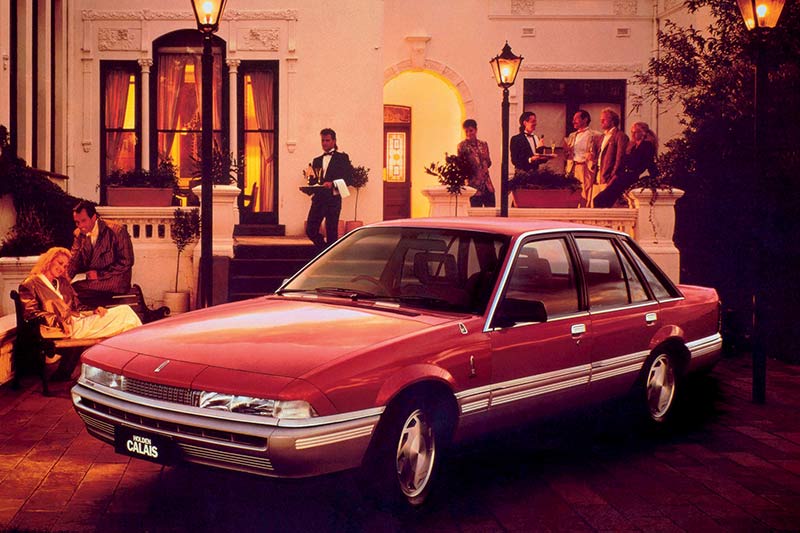
Automatic confusion
Regarding the letter in this column about the VL Commodore with weird shifting and a sudden loss of power between gears: I worked at a big Holden dealership back when the VL Commodore was launched, and I reckon we had about 40 of them towed in in the first week with exactly those symptoms.
It turned out to be as simple as the kick-down cable out of adjustment. But in the meantime, the owners of these brand-new cars were complaining that they weren’t getting any speed out of them. Initially, we were replacing the whole transmission to get the cars mobile again and there were gearboxes all over the place at the dealership. Once we’d worked out the fix, we actually sent these perfectly good gearboxes back to Holden and they were put back into cars on the production line.
Lionel East,
Melbourne, Vic
Thanks for the heads-up Lionel. And I’ve got to say, crazier things have happened. It kind of makes sense, too; if the shifting is erratic and the trans can’t make up its mind what gear it wants to be in, then surely, things like the kick-down cable come into play. It’s just a shame the bloke with the problem didn’t ask you first… before he changed various sensors and spent up big having the car psycho-analysed. If, indeed, his problem is the same one you saw thirty-odd years ago.
Your explanation makes sense on another level, too; when you’re dealing with a brand-new, unknown quantity like an all-new car (as the VL Commodore was back in the day) all the knowledge you gained on the previous models goes out the window to a certain extent. Which would explain why perfectly good gearboxes were being swapped out when it was all a question of adjustment. It would also explain why a couple of generations of Holden mechanics who’d cut their teeth on simple old red motors and Trimatic autos were suddenly tearing out what was left of their hair.
Of course, it ain’t just mechanics that get the rough end of the pineapple as new technology floods in. Even us poor old journos got it in the neck a few years back. When I started in this game, I wrote everything on a portable typewriter. Then I got an electric typewriter which wasn’t much different, but in the late 1980s, look out, here come the computers! Not only did computers force us to learn how to operate the new tech, it also ultimately made compositors’ and finished-artists’ jobs redundant and turned writers into sub-editors and, in many cases, layout artists. And because you can write it and email it yourself so it can be uploaded to a website, that’s now the expectation. So much for having a day or two to think about what you’re gonna write: Mr Internet wants it now. Funnily enough, I don’t recall a huge – or, in fact, any – pay increase as we took on these new roles on top of actually writing the stuff. And don’t even talk to me about digital photography or video…
The other problem, of course, is that anybody with an internet connection and the inclination can call themselves a motoring journalist and start publishing stuff that may or may not – and probably isn’t – worth the data download required to read it. And when you read the stuff that these jackwads are cranking out, you gotta larf, Or you would if it wasn’t devaluing an industry I actually quite like. Would you take your car to a `mechanic’ who had no qualifications, no experience but who’d decided to hang out the shingle anyway? Of course not.
So don’t believe everything you read. Unless you read it in Unique Cars, in which case, I’ll vouch for it myself. How the hell did we get from VL gearboxes to this rant? See what I mean? Journos: Can’t trust `em.
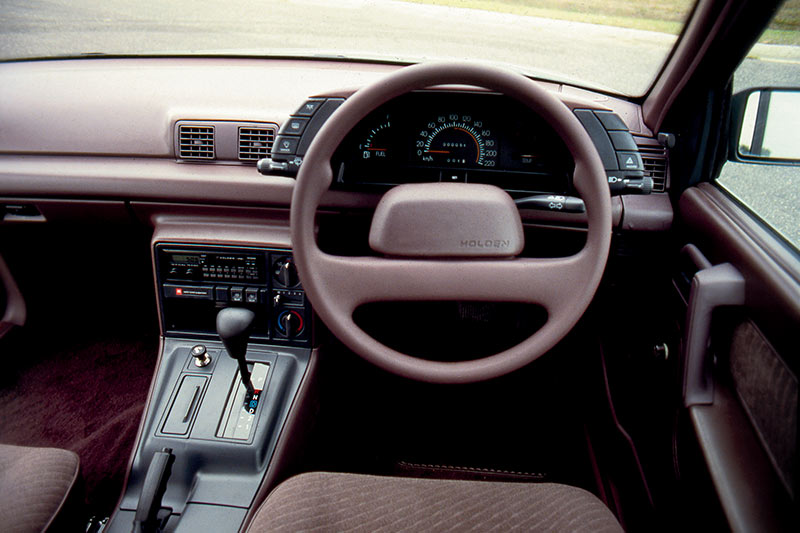
VN SS vibes
Regarding Morley’s vibrating VN SS: I drove highway patrol five-litre VNs for the coppers and they ALL did it (vibrated) when the auto clunked into fourth (locked up) at sensible speeds. The fix was to drive it manually and never travel at sensible speeds!
They were a top car apart from the ridiculous lack of brakes...one stop from 180 klicks and the pedal would go hard and then slowly sink with lots of unprintable utterances. Cracked discs were common.
FYI: The best speed we got out of an auto five-litre was radar-checked at 237kph...in a VN! And yes it was downhill.
Mark P
Ah, my taxes at work. Still, if you’ve gotta have a highway patrol, I’d prefer it to be staffed by blokes like you, Mark; guys and gals who understand the importance of thoroughly testing all performance parameters. In the name of science, of course. Mainly because while you’re out doing that, you’re not busting me for being three kliks over the limit on a downhill stretch of dual carriageway.
As for the vibrating VN, my car is a five-speed manual, so the theory doesn’t really apply. And here’s a funny thing; the vibration I’d been chasing for months in my car instantly went away when I replaced the fuel pump. The car had developed a stagger and a miss whenever the contents of that big 90-litre tank fell below about half. I diagnosed a duff pump and, when I yanked it out (it can be done without removing the tank, but you’ve gotta be double-jointed) it turned out the lift pipe was split (crumbling away, actually) letting more air into the pipe as the level in the tank dropped. Let the level fall enough and you suddenly had a lean miss at full chat which, of course, is precisely when I was experiencing the vibration in question.
You’re dead right about the brakes, too. Although in my experience, they weren’t even good for one stop. My car had a particularly wooden pedal and a distinct lack of initial retardation when I recommissioned it, so something had to be done in a hurry. The solution was not to go bigger in the rotor department, but to go grooved instead. Disc Brakes Australia makes a replacement front disc with cooling fins and grooves to let heat and gases escape when you start to lean on the anchors, and a set of those absolutely transformed my car. I’m running 18-inch wheels and sticky Pirellis, but the DBA replacements would allow you to stick with the standard SS rims if you were concerned about originality. A set of braided lines would be next, but for now I’m happy with the way the VN hauls up.
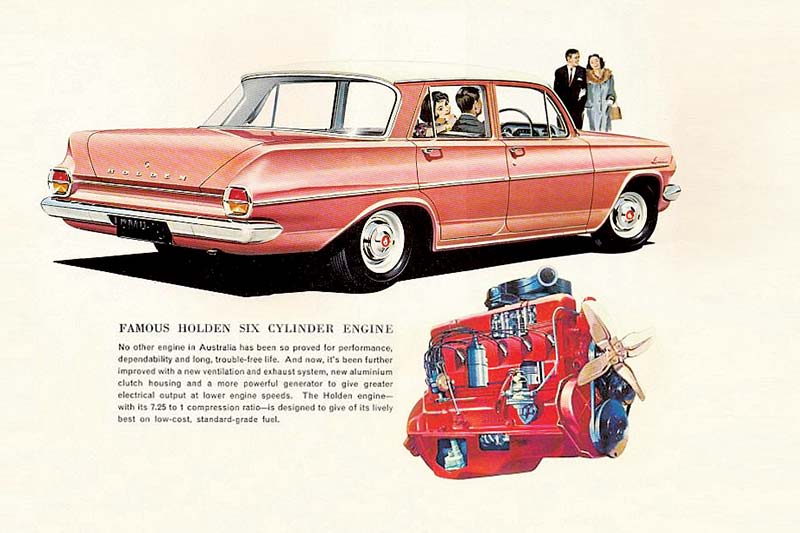
The debate goes on
Red-motored EJs? I personally knew of one, it was an EJ panel van. Yeah I know they look almost like EH vans but I’ve owned more than my fair share of EH vans and would love to find another – be it EJ or EH… for the right price, of course! EJ vans, of course, share the same tail lights as EH vans, as do most like-bodied Holden commercials of the 60s. EJ vans retain the flap fuel-filler, the twin vent scuttle panel in front of windscreen, 100mph speedo, plainer grille without the emblem, no bonnet emblem, and a different hubcap-centre colour.
OK back to the chase: A mate, the late Gary Allen of Redcliffe, owned the EJ with a factory 149 red motor. The story back then was that Holden had fitted some of the last of the EJ panel vans made with the new 149. Sadly this van’s life ended on the Maleny range when it rolled crossing a bridge and ended up in a creek bed. The many occupants (these were the days when a dozen mates could pack into a panel van) escaped with various minor injuries, not one badly hurt. So yes, there certainly was at least one factory red-motored EJ panel van that I know of personally.
Chris Willey,
Okay, Chris, I think this makes you the fourth or fifth reader who has contacted me with memories of a factory-fitted red motor in an EJ Holden. And they’ve all been commercial vehicles. As I said a couple of issues ago, that’ll do me. For me to continue to doubt the existence of these unicorn cars is the same as calling blokes like you liars, Chris, and you were there and I wasn’t.
But can you believe I still get the occasional email from outraged folks who are frothing at the gob because I have the temerity to publish letters like yours? They’ve never seen a red-motored EJ so clearly that means they didn’t exist. Must be an awful burden carrying around all the world’s knowledge, eh?
TRIVIAL PURSUIT
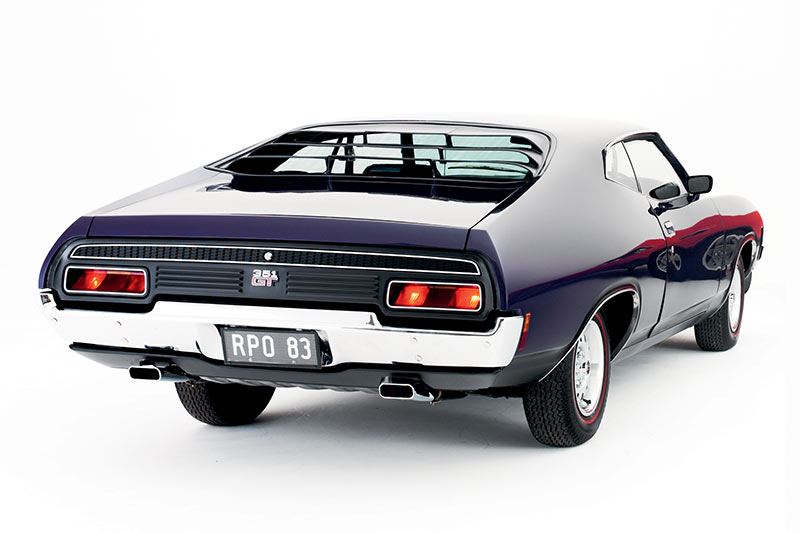
Detroit Down Under
We love to think of our classic Holdens and Fords as uniquely home-grown, but when you look more closely, you can see a lot of US design inspiration. Okay, so we all know the XK and XR Falcons were Australianised US designs, but on a more subtle level, have you ever seen a Ford Torino Hardtop parked next to an XA or XB Hardtop? The similarities are striking. And what about the ever-popular steel rims on a HQ GTS or SS (and optional on other HQs)? One look at the rims on a 1970 Pontiac Firebird Trans Am and the truth is revealed.
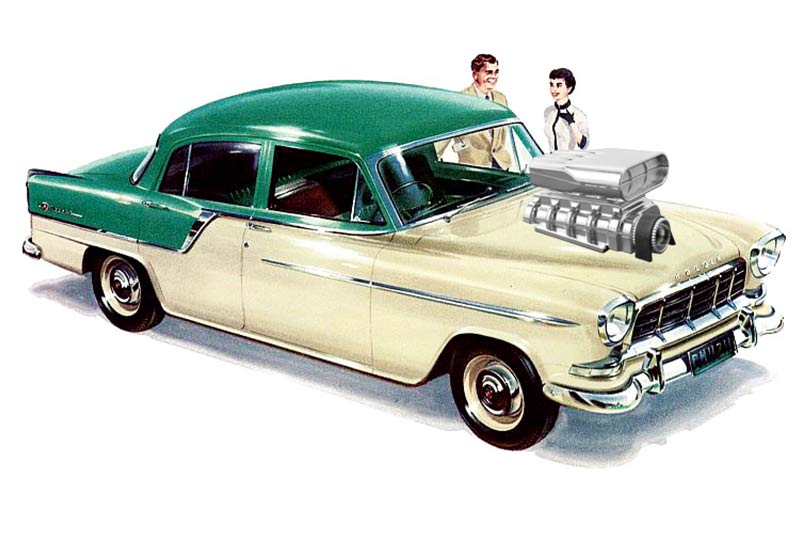 Heads up
Heads up
Ever wondered why you used to see more modified Holdens than Fords? I’m talking the 1960s here, but it’s a fact that Holdens were more commonly hotted up in the day. A large part of the reason was that it was a lot easier. See, the early Ford six-cylinder had its inlet manifold cast in one piece with the cylinder head. So changing to a better carburettor usually meant sawing the manifold off, fitting studs for an aftermarket manifold and then, finally, fitting your aftermarket carb. Possible, but not as simple as a carb swap on the Holden six.
Unique Cars magazine Value Guides
Sell your car for free right here
Get your monthly fix of news, reviews and stories on the greatest cars and minds in the automotive world.
Subscribe

.jpg)








.jpg)





